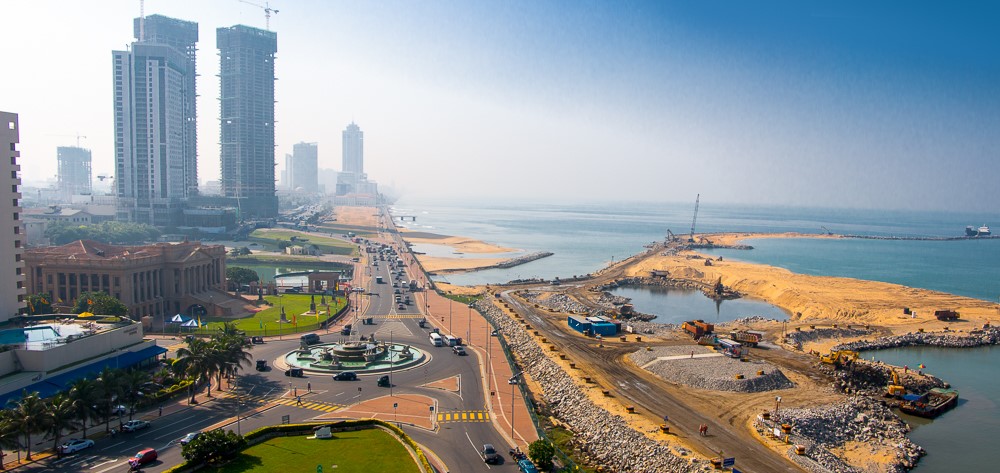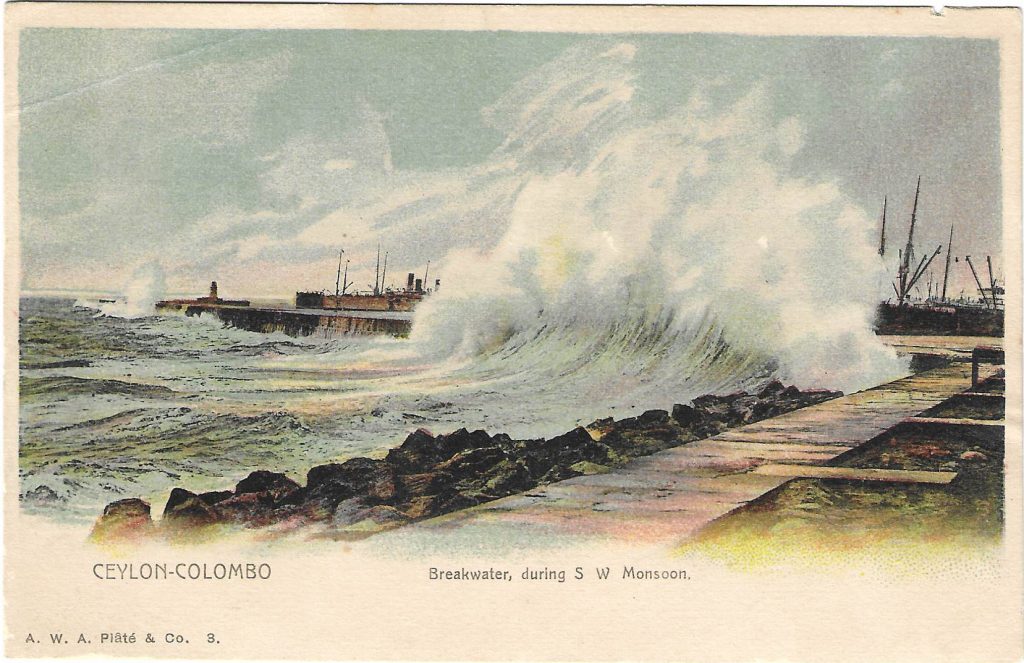In
Blog 2023
Continue Reading
Seemingly built, suddenly ruined: decolonisation and dis:connectivity in post-colonial Guinea-Bissau 1973-1983
lucas rehnman[1]
Here everything seems that was still under construction and it is suddenly ruin.-Caetano Veloso Che Guevara once stated that Africa was ‘imperialism’s weak link’[2] with enormous revolutionary potential. Indeed, liberation wars and decolonisation processes on the continent enabled the Western and Eastern blocs to perceive some regions and geopolitical conditions as opportunities to expand their influence. The most famous conflicts in Africa during the Cold War, direct results of the logics of proxy war, exemplify this: the Congo Crisis, the Angolan Civil War and the South African Border War. Amidst this allegedly cold clash between the two blocs, an often-forgotten third force emerged, the Non-Aligned Movement, created by the pioneering efforts of Tito (former Yugoslavia), Nkrumah (Ghana), Sukarno (Indonesia), Nasser (Egypt) and Nehru (India). This paper departs from the ‘forgotten’ legacies of the Third World[3] and its practices of solidarity, delving into the phenomenon of Yugoslavian technical cooperation as a vehicle for its soft diplomacy towards Africa. I consider the Yugoslav-African entanglement by focusing on expertise, transnational networks, Cold War geopolitics and Non-Aligned cooperation, which allows me to draw on ‘the connections and exchanges, on the back and forth of people, ideas, and things across boundaries’[4], from ‘macro’ to ‘micro’ and back again. A key macro-concept here is peripheral modernity,[5] which refers to all Global South, Second and Third World nations during the Cold War. I focus on Guinea-Bissau from 1973-1983, analysing its modern architecture and public sculpture in terms of the conditions of its emergence, its aesthetic-symbolic meanings and its deterioration. In post-independence Africa, following the modernist credo, construction and infrastructure became key means through which these young nations addressed social problems and expressed their national identities.[6] Guinea-Bissau was no different. Given that history is ‘inscribed’ in architecture and public art, they are suitable entrances to study and access the complexities, difficulties, contradictions and dilemmas this country experienced from 1963 (the year of the beginning of the armed struggle for independence) to 1983 (the approximate date of the complete dissolution of the socialist project and the subsequent economic liberalisation). I aim to challenge the narrative insisting that former colonies in Africa, once postcolonial, became merely the passive recipients of technical, architectural and cultural knowledge. Despite being an extremely young, sovereign country that has also suffered coups and civil war, Guinea-Bissau developed its own modernity. However, its post-colonial modernist architecture has received little attention.[7] Is this because modern buildings there ‘are often the result of isolated acts and do not correspond to the development of any architectural culture with local roots’,[8] as Ana Vaz Milheiro has sustained, implying that they are nothing more than isolated cases? Manoel Herz implies the same: ‘We consciously decided not to document the former Portuguese colonies as their independence took place in the mid-1970s and was mostly characterized by bitter conflict and long wars that overshadowed any kind of national development’.[9] He continues, stating that ‘while examples of Late Modernist architecture certainly exist in Lusophone Africa […] they were built entirely during the colonial era without preempting the intention of decolonization’.[10] In the next section, I reveal the falsity of these last three claims with reference to a Yugoslavian-influenced modernist architectural legacy in Guinea-Bissau that flourished – and deteriorated – very rapidly. Beyond the undisputable but overlooked Yugoslavian influence and the simplistic corollaries of ‘architectural export’ and ‘knowledge transfer’, could Bissau-Guineans have played an active and decisive role in establishing a modern architectural legacy in their country between 1973 to 1983?
Decolonisation and dis:connectivity
After its independence from Portugal, between 1974 and 1980, Guinea-Bissau experienced a short-lived socialist period led by Luís Cabral, the brother of anti-colonial revolutionary leader Amílcar Cabral. The construction of a national identity with a pan-African and universal conscience as well as the concept of a ‘New Man’, one of Amilcar Cabral's key concerns, had to be implemented in diverse areas of cultural, social and political life. Education,[11] cinema[12] and music[13] were able to thrive alongside monument-making and architecture. In hindsight, though, the period is symptomatic of the postcolonial condition. The Portuguese hardly developed any industry in the territory during colonial times, having focused instead on extraction.[14] Besides, the country had only four professionals formally trained in architecture and construction[15]. The conditions for national development, thus, were unfavourable and could be (partially) counteracted only through international aid and technical cooperation brought forth by Third World solidarity. Yugoslavia, Cuba and especially the Soviet Union played key roles. A number of Bissau-Guineans also were granted scholarships to study abroad, which were mainly offered by socialist European countries (image 1).[16]Image 1: Total of students from the African Party for the Independence of Guinea and Cape Verde (PAIGC) who concluded their studies abroad between 1963-1975. Data gathered by Sonja Borges, Militant Education, Liberation Struggle, Consciousness.The PAIGC Education in Guinea Bissau 1963-1978 (Bern: Peter Lang, 2019),99.
Thus, ‘modernism’ pervaded new contexts in the name of ‘knowledge transfer, overseas aid and new forms of cooperation’[17] and through gift-giving, credit and barter.[18] Yet, the idea of mere ‘export’ is misleading. ‘Modernism’ is not exclusive to Western powers. Third World countries have developed their own modernities with a considerable degree of autonomy. The neglect of these modernities and fair assessments of their autonomy highlight the problem of coloniality in the act of making biased history – and even to (induced) oblivion as a convenient political project. Considering Guinea-Bissau, three understudied historical figures are relevant to my argument: Alberto ‘Tino’ Lima Gomes, the first Minister of Public Works[19] and a local who studied architecture and engineering in Yugoslavia on scholarship;[20] his wife, Yugoslavian architect Milanka Lima Gomes, who designed a number of buildings and public monuments as a naturalised Bissau-Guinean; and Nikola Arsenić,[21] a Yugoslavian architect who worked under a long-term technical cooperation agreement and was very prolific while living there. I won’t analyse all their buildings. The point is, rather, to infer a ‘forgotten’ legacy from a selection.Image 2: African scholarship holders in Slovenia (trip to Velenje), 1963. From the photo collection of the Museum of Yugoslav History.
One of these notable constructions is the memorial building for the unilateral declaration of independence (image 3), planned and coordinated by both Alberto and Milanka Lima Gomes, consisting of a functional rotunda[22]with a vernacular thatched roof made from cibe palm trees (borassus aethiopum), bamboo and straw, it was built to officialise the unilateral declaration of independence. This event was celebrated on top of the hill near Lugadjol on 24 September 1973.[23] The construction occurred during the rainy season, against the odds, and was completed in less than three months. Apart from the practicality that the vernacular roof offered under those challenging conditions, there is another layer to consider, that of an aesthetic statement: hybridism. This is much less evident – or practically absent – in the buildings and sculptures yet to be discussed, but I’ll address that question later.Image 3: Memorial building for the unilateral declaration of independence of Guinea-Bissau on 24th September 1973, Lugadjol, east of Boé.
Surely more ambitious and formally inventive is the former presidential residence, which is located on Bubaque Island in the Bijagós archipelago and is now falling into ruin (image 4). Despite its deceivingly brutalist appearance, the concrete structure was originally painted white and was covered by bituminous sheets. This body of architectural work here presented can be seen as a creative ingestion and digestion of foreign architecture, meaning that not only a mere borrowing of white modernist forms and solutions took place, but that a local appropriation, interpretation and transformation of the modernist vocabulary also occurred, amounting to an original, hybrid architecture worth documenting and preserving.Image 4: Luís Cabral’s house in Bubaque island. State-funded and designed by Milanka Lima Gomes (1976) and Nikola Arsenić (1978). Still from © The Vanished Dream 2016
Except for the memorial building (image 3), there is nothing in these structures that makes them unmistakably ‘African’, I admit, but aesthetically, they clearly reflect pan-Africanism and Non-Aligned modernity. This, in itself, in a former Portuguese colony, already makes them original. Contradicting Manoel Herz, they were not built in the colonial era and do preempt and reflect ‘the intention of decolonization’. Compared with Ghana’s architecture of 1961-1970 (a country that, by the way, also received Yugoslav architects under technical cooperation agreement), their affinities and autonomous character become evident: a mix of ‘Eastern European modernism’,[24] ‘tropical architecture’ and vernacular elements, ‘they cannot be reduced to a sum of European ‘modernisms’.[25]Image 5: RTP África building / Namintchit restaurant, Bissau, 1976. Designed by Nikola Arsenić. Photo by © M.M. Jones ( instagram: @Bauzeitgeist ), November 2018
Image 6: Summit buildings ("cimeira"), Bissau, 1979, today partially in ruins. State-funded and designed by Nikola Arsenić; supervision: Armando Napoko; decoration: Maria Aura Troçolo; coordination: Milanka Lima Gomes. Still from © The Vanished Dream 2016.
The public sculptures, on the other hand, are, visually speaking, ostensibly ‘Yugoslavian’ and do not reference the rich and diverse local arts of Guinea-Bissau in any way (image 7). Nationalists deployed modern European aesthetics to represent emancipation: a paradox?[26] From an art-theoretical perspective, these sculptures are ‘modernist’ in the worst way; they plainly ignore their surroundings and their socio-cultural implications. In short, they do not take ‘context’ in consideration, a prerequisite of public art since the 1960s. Monuments, even more than the architecture of the period, raise the complex question of independent Africa’s hasty belief in ‘development’ and whether such belief has been beneficial to the new nations (a question that Amílcar Cabral himself, as an ‘assimilated’ local of Cape-Verdean parents, Marxist thinker and agronomist, embodied in unresolved ways).[27] If ,however, one considers the University of Ife, later renamed Obafemi Awolowo University, in Nigeria, in which Israeli architect Arieh Sharon attempted to marry modern architecture with an African visual vocabulary to the verge of stereotype, the abstract, pretentiously transcultural Yugoslavian design is arguably preferable, since it does not fall into the trap of white appropriation of another culture. Bissau-Guinean architecture and public sculpture discussed here are thus more honest. Mojca Smode Cvitanović wrote that Non-Aligned mutual cooperation ‘lost its enthusiasm’ from the early 1970s onwards,[28] though Guinea-Bissau appears to be an exception. In 1979, Fidel Castro became the new chairman of the Non-Aligned Movement, and Tito died a year later. The movement’s credibility decreased during the 1980s, coinciding with a successful coup in Guinea-Bissau. With the end of socialism in Eastern Europe in the early 1990s, the definition of ‘non-alignment’ finally changed entirely. Canonical architectural historiography, however, didn’t fully catch up with either Yugoslav or African architecture – an oversight that reveals an unfortunate prolongation of Cold War logics long after its end.[29]Image 7: Monument for the Martyrs of the Pidjiguiti Massacre, known as Mon di Timba (‘the fist of Timba’), a public sculpture located in the country’s capital, Bissau, state-funded and designed by Nikola Arsenić (1975-1978). Building technique: reinforced concrete covered with slate sheets. Still from © Memória / Calling Cabral, directed by Welket Bungué.
Conclusion
Modernist practices from 1973-1983 were decidedly not merely ‘a projection from outside’. On the contrary, the rapid (even if fragile) consolidation of modernism in Guinea-Bissau has been a process where locals have worked actively to make themselves modern, instead of merely being made modern by outside forces. The principal actor coordinating all the construction projects in the country during the period was Bissau-Guinean-born, the Minister of Public Works Alberto ‘Tino’ Lima Gomes. The Yugoslav fundamental participation notwithstanding, local agency was decisive and shouldn’t be overlooked. Now, what unspent fuel remains from the anti-colonial struggle and the early post-independence days to be reignited today? Or, more modestly and realistically: how can scholarly work and intellectual engagement counteract oblivion as a convenient political project? Because pan-African, socialist and Third World dreams, visions and abandoned projects might have a contemporary ‘utility’ or usefulness; they can be unearthed to be remembered, retold, reclaimed, redreamed and thus inform our political imagination. As it was shown, the unfulfilled promises of the 1973-1983 period are aesthetically latent in the ambivalent documents of the era, be they buildings, memorials or propaganda. Simultaneously ‘cultural’ and ‘barbaric’, it falls on posterity not to allow the latter to prevail. [1] The author would like to thank Ben Kamis , Nikolai Brandes, Anna Sophia Nübling, Welket Bungué, Milanka Lima Gomes, Nikola Arsenić (the son), Radovan Cukić, Matthew Jones, Juan Betancor, Lars Rudebeck, Doreen Mende, Viviane Letayf and Geraldo Pina. [2] Ahmed Ben Bella, ‘Che as I Knew Him’, Le Monde Diplomatique, October 1997, https://mondediplo.com/1997/10/che. [3] According to Duanfang Lu, ‘compared with other alternative phrases such as “developing countries”, “less developed countries”, “non-industrialized countries”, and “the South”, the Third World is more than merely a socio-economic designation. It has come to represent a forceful ideology, a meaningful rallying point, a widely shared mentality, and a unique source of identity. The phrase has proven rhetorically, politically, and theoretically effective. Despite the end of the Cold War, the term “Third World” remains viable in contemporary geopolitical vocabulary, as seen in leading scholarly journals such as Third World Quarterly and Journal of Third World Studies’ Lu Duanfang, Third World Modernism: Architecture, Development and Identity (London: Routledge, 2010), 19, 20. [4] In: Sebastian Conrad, What Is Global History? (Princeton/Oxford: Princeton University Press, 2016), 42. [5] See my ongoing curatorial project: https://ifddr.org/en/cooperations/unvollendetes_museum/ [6] Perhaps the best example is the case of Ghana under Kwame Nkrumah. An important influence on Amílcar Cabral’s thinking even, Nkrumah’s modernity sought to redefine African subjectivity, prioritising African unity over ethnic division. [7] A commendable survey can be found in: Phillip Meuser and Adil Dalbai, ‘Guinea-Bissau’, Architectual Guide. Sub-Saharan Africa. Western Africa. Along the Atlantic Ocean Coast 3 (2021): 12–67, but it’s the only one of its kind and far from exhaustive. [8] Full quote here: ‘Modern buildings in these three African provinces [Cape Verde, Guinea-Bissau and São Tomé and Príncipe] are often the result of isolated acts and do not correspond to the development of any architectural culture with local roots’ In: Milheiro Ana, ‘Resisting Modernity: Colonization and Public Works. Cape Verde, Guinea-Bissau and São Tomé and Príncipe’, in Ilha de São Jorge, ed. Paula Nascimento and Stefano Pansera (Beyond Entropy Books, 2014), 178. [9] In: Manuel Herz, ed., African Modernism: The Architecture of Independence. Ghana, Senegal, Côte d’Ivoire, Kenya, Zambia (Zürich: Park Books, 2015). [10] In: Herz. [11] Brazilian educator Paulo Freire, for example, was consulted by Guinea-Bissau’s first independent government on how to optimise the processes of attaining literacy on a national scale, among other complex dilemmas. See: Sérgio Haddad, O Educador: Um Perfil de Paulo Freire (São Paulo: Todavia, 2019); See also: Paulo Freire, Pedagogy in Process: The Letters to Guinea-Bissau (London: Bloomsbury, 2016) See also Augusta Henriques, an important educator and follower of Paulo Freire’s methods: https://en.wikipedia.org/wiki/Augusta_Henriques. [12] Already in 1967, Amílcar Cabral sent four young Bissau-Guineans to Cuba to study cinema at the Cuban Institute of Cinematographic Art and Industry (ICAIC), namely José Cobumba Bolama, Josefina Crato, Sana Na N’Hada and Flora Gomes, who studied under Santiago Álvarez, a fact that reveals Cabral’s vision for national cinema. Sana Na N’Hada completed his important film O Regresso de Amílcar Cabral in 1976. More on Guinea-Bissau’s audiovisual production since independence, see: Cunha Paulo and Catarina Laranjeiro, ‘Guiné-Bissau: Do Cinema de Estado Ao Cinema Fora Do Estado’, Rebeca - Revista Brasileira De Estudos De Cinema e Audiovisual 5, no. 2 (2017). [13] Good examples include José Carlos Schwarz and the band Super Mama Djombo. Bissau-born poet and musician José Carlos Schwarz (1949-1977) was politically active and even joined the resistance. He was imprisoned for his participation in the struggle for independence. Following independence in 1974, Schwarz became the director of the Department for Art and Culture and became responsible for Guinea-Bissau’s youth policy. Super Mama Djombo was a band from Guinea Bissau, formed in the mid-1960s. They would often play at President Luís Cabral’s public speeches, and their concerts were broadcast on live radio. In 1980, Luís Cabral was ousted, and the new regime under Nino Vieira no longer supported the band. They had fewer opportunities to perform and broke up in 1986. [14] ‘Industry in [Portuguese Guinea] was particularly underdeveloped: some factories for rice peeling, some for the extraction of fish oil and peanut oil, a few ice factories and small workshops for automobile repair, locksmiths and wood cutting, as well as distilleries for alcoholic beverages. There were no industrial companies owned by the colonizers for the exploitation of land or natural wealth: the colony’s large economic share was based on native agriculture, the acquisition of its surpluses and the organisation of internal and external trade. The level of industrialisation was close to zero, as was its economic value’. (my translation) In: Cátia Teixeira and Maria Augusta Tavares, ‘Guiné-Bissau: O Presente Lança Luz Sobre o Passado’, Diálogos Magazine, no. 3 (2013): 869–908. [15] Original quote here: ‘O primeiro período [1974-1983] é característico, porque o país, praticamente durante 10 anos, teve apenas quatro quadros formados em arquitectura e construção civil.’ In: Milanka L. Gomes, ‘Reconstrução Nacional e Balanço Das Principais Ações Realizadas Entre 1974 e 1996 Na Guiné-Bissau Bissau’ (CIALP conference intervention, 1996), Private Document. [16] In: Sonja Borges, Militant Education, Liberation Struggle, Consciousness.The PAIGC Education in Guinea Bissau 1963-1978 (Bern: Peter Lang, 2019), 98, 99. [17] In: Duanfang, Third World Modernism: Architecture, Development and Identity, 26. [18] In: Łukasz Stanek, ‘Gift, Credit, Barter: Architectural Mobilities in Global Socialism’, Archive and Editorial Project, E-Flux Architecture (blog), 2020, https://www.e-flux.com/architecture/housing/337850/gift-credit-barter-architectural-mobilities-in-global-socialism/. [19] In: ‘Boletim Oficial Da República Da Guiné-Bissau, Numero 40’, 11 October 1978, Fundação Mário Soares, Arquivo Mário Pinto de Andrade, http://www.casacomum.org/cc/visualizador?pasta=10249.003. [20] He went to Yugoslavia to study through a scholarship support and returned with heavy luggage and an engineer/architect diploma after independence.’ (my translation). In: Graça Tabanca Graca Luís, ‘Caderno de Notas de Um Mais Velho’, Blog, Luís Graça & Camaradas Da Guiné (blog), 9 November 2016, https://blogueforanadaevaotres.blogspot.com/2016/11/guine-6374-p16700-caderno-de-notas-de.html. [21] See Nikola Arsenić’s short bio in: The Vanished Dream (Siddhartha Films, 2016), http://thevanisheddream.com/category/cast/. [22] Interestingly, according to Geraldo Pina, “in Guinea-Bissau, circular houses have often been regarded as representative habitat of the native population.” In: Meuser and Dalbai, ‘Guinea-Bissau’, 26. [23] Recognition became universal following the 1974 Carnation Revolution in Portugal. For a brief description of the unilateral declaration’s ceremony, see my own text: Lucas Rehnman, ‘Amílcar Cabral d’après l’art Conceptuel or The Liberation Struggle as Conceptual Art’, The Whole Life, 24 March 2022, https://wholelife.hkw.de/amilcar-cabral-dapres-lart-conceptuel-or-the-liberation-struggle-as-conceptual-art/#footnote13. [24] It would be false to speak of ‘“socialist modernism’”, because ‘“alleging a certain formal or visual essence of “socialist modernism” makes just as much sense as trying to identify inherent aesthetic features of a “capitalist modernism”, a label that no one but the most hardened socialist realist critic would take seriously, because it too broadly equates cultural and political categories’.” Vladimir Kulić, Wolfgang Thaler, and Maroje Mrduljas, eds., Modernism In-Between: The Mediatory Architectures of Socialist Yugoslavia (Berlin: Jovis Verlag, 2012), 17. [25] In: Łukasz Stanek, ‘Architects from Socialist Countries in Ghana (1957–67): Modern Architecture and Mondialisation’, Journal of the Society of Architectural Historians 74, no. 4 (December 2015): 416–42. [26] Full quote here: ‘Only in postcolonial history writing is agency sometimes attributed to Africans, but, even then, typically only to nationalists who, paradoxically, deployed a modern European architecture to represent emancipation.’ In: Ikem Okoye, ‘Where Was Not Modernism?’, CCA Articles, n.d., https://www.cca.qc.ca/en/articles/77238/where-was-not-modernism. [27] Regimes in the new African nations adopted the Enlightenment’s scientific heritage without any discussions of its cultural implications. This was problematic […] as the ‘machine was not neutral’. It could also be added that this was not only the case with the scientific heritage, but applied equally to the artistic heritage as well.’ In: Bojana Piškur, Southern Constellations: The Poetics of the Non-Aligned (Ljubljana: Moderna galerija, 2019), 16 and Piškur specifies the meaning of ‘machine’ as follows: ‘Machine as one of the instruments of cultural transformation that was brought to a space whose own cultural history had not prepared them for this new device’ a. And: ‘Colonialism brought the machine into spaces whose own cultural history had not prepared them for this new device, and besides, the machine and mechanization had been one of the instruments of cultural transformation. A machine is imbued with cultural forms; the tractor, for example, changes the relationship of farmers to their fields, each other, and the place of the plough in their cosmological world. The tractor would not leave […] social relations unchanged. […] The bulk of the social order inhabited the machine and grew around it’; In: Vijay Prashad, The Darker Nations: A People’s History of the Third World (New York: The New Press, 2007). [28] Full quote here: ‘The need for foreign personnel in developing countries was most stressing right after their independence, which was regularly and effectively accommodated by Yugoslavia, in line with its own political interests. The change in trends of technical cooperation, however, occurred in the early 1970s as a result of the events on both sides. In Yugoslavia, the living standard improved. The developing world, on the other hand, suffered a number of political and economic crises causing social instability. The generational shift and decentralization of Yugoslavia further weakened the integrity of the non-alignment policy, which lost its enthusiasm, proved to be less pragmatic than expected. This redirected technical cooperation towards partners who were able to secure economically and socially stable conditions for assignments.’ In: Smode Cvitanović, ‘Tracing the Non-Aligned Architecture: Environments of Technical Cooperation and the Work of Croatian Architects in Kumasi, Ghana (1961-1970)’, Histories of Postwar Architecture 3, no. 6 (2020): 34–67. [29] Full quote here: ‘Eastern European architecture as a whole has largely been left out of the discipline’s modern canonical history, an oversight that not only underscores an ongoing Eurocentric (Western) bias, but also reflects the prolongation of the cultural logic of the Cold War long after its end’. In: M. Stierli and Vladimir Kulić, Toward a Concrete Utopia: Architecture in Yugoslavia, 1948–1980 (New York: The Museum of Modern Art, 2018).Image 8: Commemorative stamp with Amílcar Cabral’s mausoleum represented, a monument located in Fortaleza de São José da Amura, Bissau, state-funded and designed by Zoran Jovanović, built in 1977.
Bibliography
Ana, Milheiro. ‘Resisting Modernity: Colonization and Public Works. Cape Verde, Guinea-Bissau and São Tomé and Príncipe’. In Ilha de São Jorge, edited by Paula Nascimento and Stefano Pansera, 165–86. Beyond Entropy Books, 2014. Ben Bella, Ahmed. ‘Che as I Knew Him’. Le Monde Diplomatique, October 1997. https://mondediplo.com/1997/10/che. ‘Boletim Oficial Da República Da Guiné-Bissau, Numero 40’, 11 October 1978. Fundação Mário Soares, Arquivo Mário Pinto de Andrade. http://www.casacomum.org/cc/visualizador?pasta=10249.003. Borges, Sonja. Militant Education, Liberation Struggle, Consciousness.The PAIGC Education in Guinea Bissau 1963-1978. Bern: Peter Lang, 2019. Conrad, Sebastian. What Is Global History? Princeton/Oxford: Princeton University Press, 2016. Cvitanović, Smode. ‘Tracing the Non-Aligned Architecture: Environments of Technical Cooperation and the Work of Croatian Architects in Kumasi, Ghana (1961-1970)’. Histories of Postwar Architecture 3, no. 6 (2020): 34–67. Duanfang, Lu. Third World Modernism: Architecture, Development and Identity. London: Routledge, 2010. Freire, Paulo. Pedagogy in Process: The Letters to Guinea-Bissau. London: Bloomsbury, 2016. Gomes, Milanka L. ‘Reconstrução Nacional e Balanço Das Principais Ações Realizadas Entre 1974 e 1996 Na Guiné-Bissau Bissau’. CIALP conference intervention, 1996. Private Document. Haddad, Sérgio. O Educador: Um Perfil de Paulo Freire. São Paulo: Todavia, 2019. Herz, Manuel, ed. African Modernism: The Architecture of Independence. Ghana, Senegal, Côte d’Ivoire, Kenya, Zambia. Zürich: Park Books, 2015. Kulić, Vladimir, Wolfgang Thaler, and Maroje Mrduljas, eds. Modernism In-Between: The Mediatory Architectures of Socialist Yugoslavia. Berlin: Jovis Verlag, 2012. Meuser, Phillip, and Adil Dalbai. ‘Guinea-Bissau’. Architectual Guide. Sub-Saharan Africa. Western Africa. Along the Atlantic Ocean Coast 3 (2021): 12–67. Okoye, Ikem. ‘Where Was Not Modernism?’ CCA Articles, n.d. https://www.cca.qc.ca/en/articles/77238/where-was-not-modernism. Paulo, Cunha, and Catarina Laranjeiro. ‘Guiné-Bissau: Do Cinema de Estado Ao Cinema Fora Do Estado’. Rebeca - Revista Brasileira De Estudos De Cinema e Audiovisual 5, no. 2 (2017). Piškur, Bojana. Southern Constellations: The Poetics of the Non-Aligned. Ljubljana: Moderna galerija, 2019. Prashad, Vijay. The Darker Nations: A People’s History of the Third World. New York: The New Press, 2007. Rehnman, Lucas. ‘Amílcar Cabral d’après l’art Conceptuel or The Liberation Struggle as Conceptual Art’. The Whole Life, 24 March 2022. https://wholelife.hkw.de/amilcar-cabral-dapres-lart-conceptuel-or-the-liberation-struggle-as-conceptual-art/#footnote13. Stanek, Łukasz. ‘Architects from Socialist Countries in Ghana (1957–67): Modern Architecture and Mondialisation’. Journal of the Society of Architectural Historians 74, no. 4 (December 2015): 416–42. ———. ‘Gift, Credit, Barter: Architectural Mobilities in Global Socialism’. Archive and Editorial Project. E-Flux Architecture (blog), 2020. https://www.e-flux.com/architecture/housing/337850/gift-credit-barter-architectural-mobilities-in-global-socialism/. Stierli, M., and Vladimir Kulić. Toward a Concrete Utopia: Architecture in Yugoslavia, 1948–1980. New York: The Museum of Modern Art, 2018. Tabanca Graca Luís, Graça. ‘Caderno de Notas de Um Mais Velho’. Blog. Luís Graça & Camaradas Da Guiné (blog), 9 November 2016. https://blogueforanadaevaotres.blogspot.com/2016/11/guine-6374-p16700-caderno-de-notas-de.html. Teixeira, Cátia, and Maria Augusta Tavares. ‘Guiné-Bissau: O Presente Lança Luz Sobre o Passado’. Diálogos Magazine, no. 3 (2013): 869–908. The Vanished Dream. Siddhartha Films, 2016. http://thevanisheddream.com/category/cast/.citation information:
Rehnman, Lucas. ‘Seemingly Built, Suddenly Ruined: Decolonisation and Dis:Connectivity in Post-Colonial Guinea-Bissau 1973-1983’. Global Dis:Connect Blog (blog), 21 February 2023. https://www.globaldisconnect.org/02/21/seemingly-built-suddenly-ruined-decolonisation-and-disconnectivity-in-post-colonial-guinea-bissau-1973-1983/.
21 February 2023






 Image:
Image:  Image: KHK global dis:connect collection
Image: KHK global dis:connect collection